Inland sea oats (
Chasmanthium latifolium) is one of the showiest native grasses, with its elegant bamboo-like wide leaves that drape over narrow green stems. With a large native range, including the U.S. Southeast, it adapts to many soil types and thrives in wet, shady sites. Collect and spread mature seed heads in autumn, which is also the best time to establish new transplants.
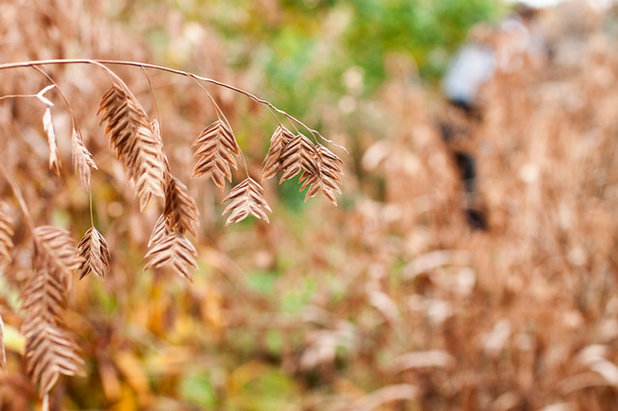 Photo by Josiah Lau Photography
Photo by Josiah Lau Photography
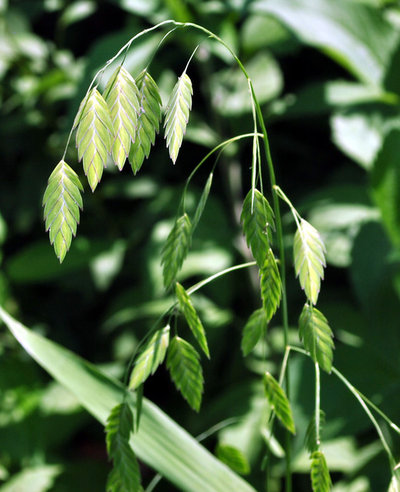 Botanical name: Chasmanthium latifoliumCommon name:
Botanical name: Chasmanthium latifoliumCommon name: Inland sea oats, Indian wood oats, wild oats, upland oats, northern sea oats
Origin: Native to the eastern and central U.S.
Where it will grow: Hardy to 15 degrees Fahrenheit (USDA zones 3 to 11; find your zone)
Water requirement: High
Light requirement: Partial shade to full shade
Soil requirement: Prefers moist soil
Mature size: 2 to 4 feet tall with a spread of 2 to 6 feet
Benefits and tolerances: Low maintenance; tolerant of drought, clay soil and black walnut
Seasonal interest: Green blooms in summer; brown seeds persist from autumn through winter
When to plant: Transplant or cast seeds in fall.
Photo by Aaron Carlson
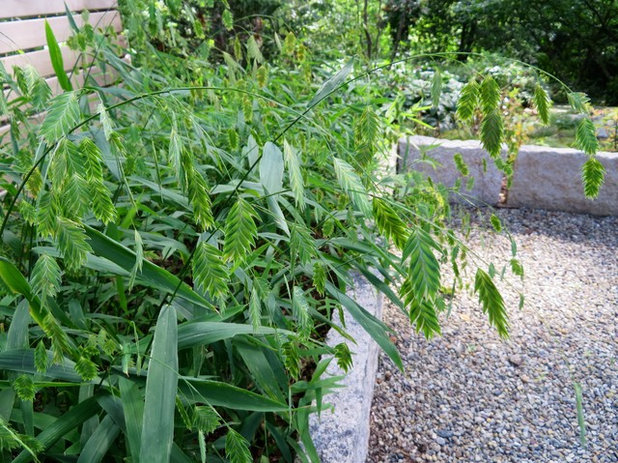
Carex: Garden Design by Carolyn Mullet
Distinguishing traits. Inland sea oats is among the first herbaceous plants to send up new growth in spring. Wide, nodding blades of grass fall over the stems and the flower heads, resembling those of native sea oats (
Uniola paniculata).
Not surprisingly, this similarity to the dune species is the reason for
Chasmanthium latifolium’s
common name.
The green seed heads turn brown from late summer into early autumn. Birds will feed on the seed heads as they persist through winter.
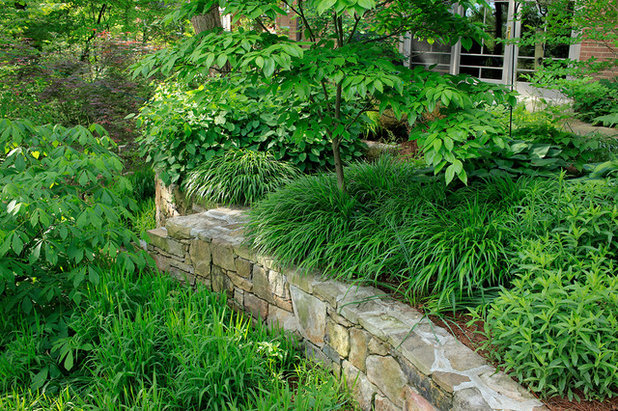
Tom Mannion Landscape Design, Inc.
How to use it. As a low, spreading ground cover, inland sea oats is great for erosion control on a slope, or as a woodland ground cover under live oak (
Quercus virginiana) or other large native trees.
It is a very reliable plant and suitable for small spaces and courtyard gardens. The inland sea oats pictured here is cascading over the edge of the stone wall. The growth structure of inland sea oats makes it great for pairing with other cascading grasses and as a textural complement to native ferns. Group this plant with other shade-loving plants that thrive in moist soils.
Let the foliage stay through winter to provide some seasonal interest. To keep this plant tidy, cut brown growth severely back in late winter or early spring.
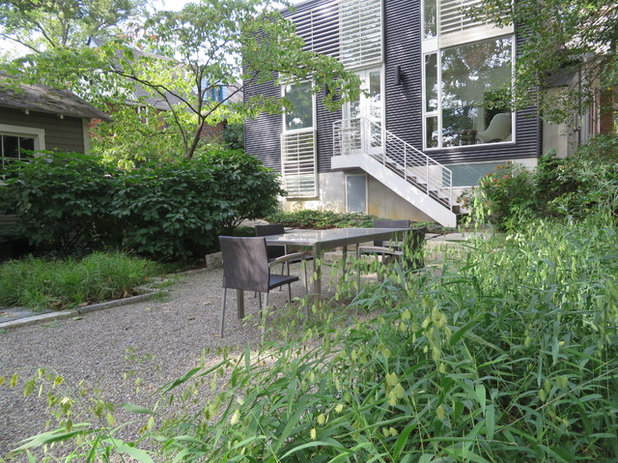
Carex: Garden Design by Carolyn Mullet
Planting notes. If you’re planting inland sea oats under one tree or in a small planting bed, purchase 1-gallon container plants from the nursery and space them 18 to 24 inches apart. Mulch heavily with pine bark mulch or hay and keep it thoroughly watered to establish it.
Try one of two methods if you’re planting inland sea oats over a much larger area:
1. Broadcast seeds. Purchase bulk seed from a native seed supplier and broadcast the seed at a rate of 2 pounds per 1,000 square feet. You can do this by hand or with a seed spreader. The best time to broadcast the seed is early autumn. If you’re planting it on a slope, you may want to use netting to help secure the soil.
2. Plant plugs. Covering a large area can be expensive with quart- or gallon-size container plants. Instead, purchase plugs, which are usually 2- to 4-inch plants grown in small plant cells within a larger tray. Plant the plugs 1 foot apart and mulch with hay.





